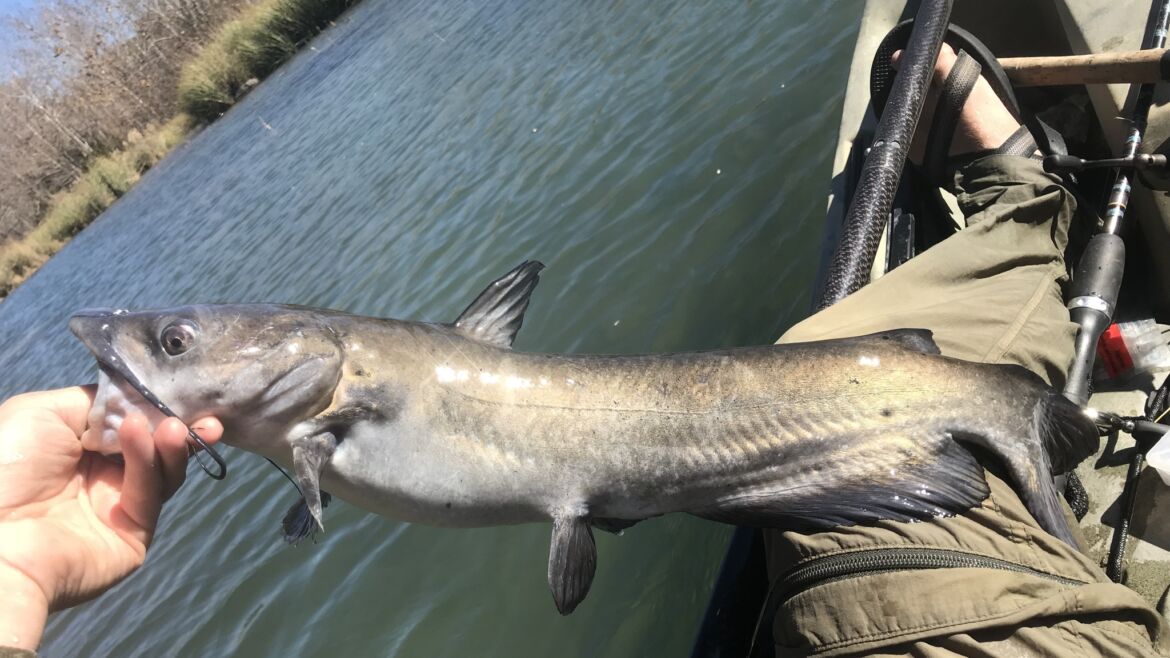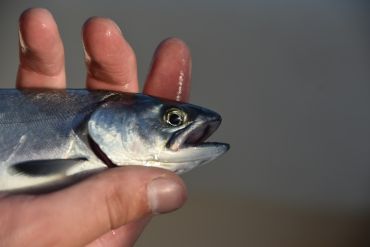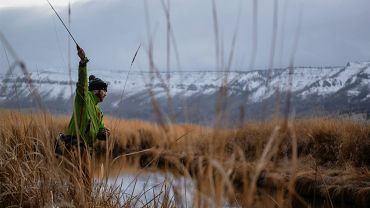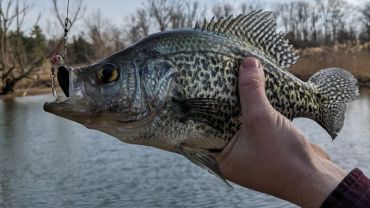With 2,069 miles of coastline, it’s not difficult to find outstanding fishing destinations on the East Coast of the U.S., whether it’s inshore or deep sea saltwater fishing or fishing in lakes, ponds, and creeks. Add in some select areas for fly fishing, and the choices become even more appealing.
It gets a little tricky however, when it comes to selecting the top five places for the best East Coast fishing destinations to actually visit. Fishbox is here to help.
Get your personalized fishing map
Answer a quick quiz and get your own personalized fishing map
Whether it’s hunting sharks or tuna off Montauk on the eastern end of Long Island, hooking into a striper run in Martha’s Vineyard, heading to the Chesapeake Bay area for rockfish, trekking to Hilton Head, S.C. for secret largemouth bass spots, or the easing down to the Florida Keys for tarpon and snook, East Coast fishing trips offer some of the largest variety of fish for saltwater and freshwater anglers and some of the top scenery in the country.
What’s more, most of the best spots for East Coast fishing are within a two-hour drive of some of the most cosmopolitan and historical cities in the U.S., making the destination appealing for the entire family.
Here are our top five picks for the best East Coast fishing:
Montauk, N.Y.
The self-proclaimed “Fishing Capital of the World” isn’t just one of the top fishing destinations on the East Coast; it may very well be one of the top fishing locales in the country.
Home to the largest commercial fishing fleet in N.Y. state, Montauk fishing became legendary in 1986. Two fishermen reeled in a 3,427-pound Great White shark about 28 miles off Montauk. It was not only the largest shark ever caught but also the largest fish ever caught by rod and reel. The catch was such a monumental accomplishment that it was immortalized in the movie Jaws.
The emphasis in Montauk—besides the plague of glitz infiltrating from the nearby Hamptons– remains offshore and inshore fishing. With more than 70 charter services to choose from, anglers can target everything from shark, tuna, marlin, and swordfish offshore, while most inshore anglers focus on fluke (flounder), black seabass, and striped bass.
Flukes are abundant in the area most of the year, and most anglers opt for setups including 10-15 pound braided line, 15-20 pound leaders with Gulp, and jig heads of various weights.
There is also the opportunity for lake fishing for walleye, bass, and perch at Fort Pond and Fresh Pond (located in Hither Hills State Park, an affordable lodging option) and surfcasting near the iconic Montauk Lighthouse and Gin Beach.
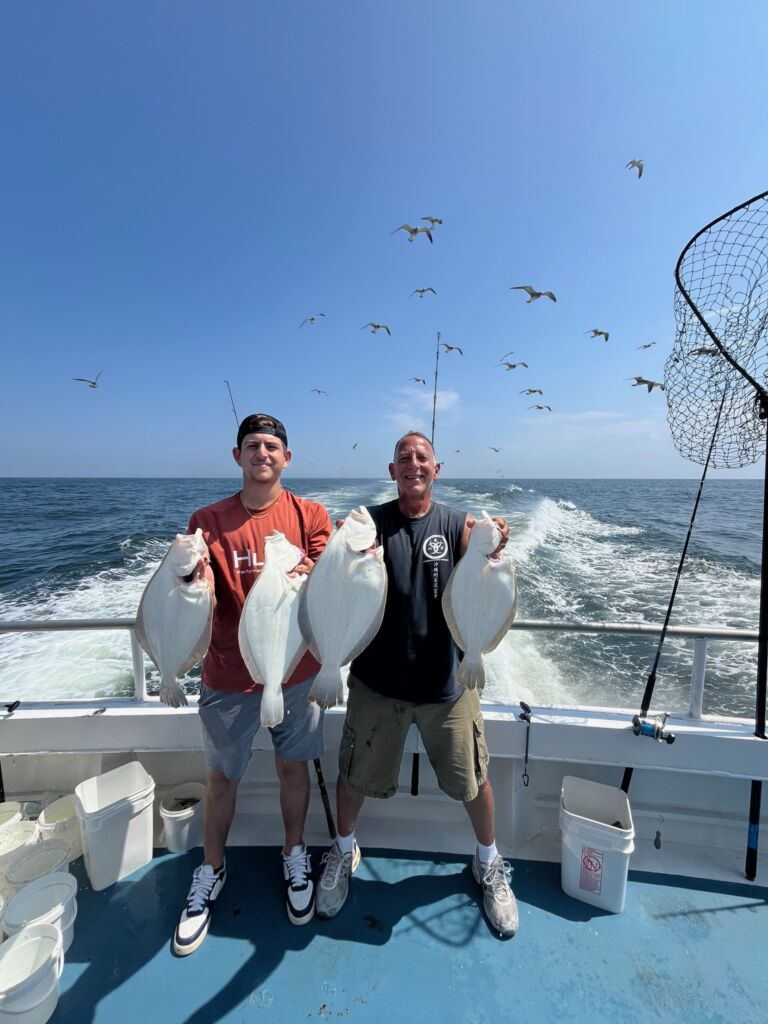
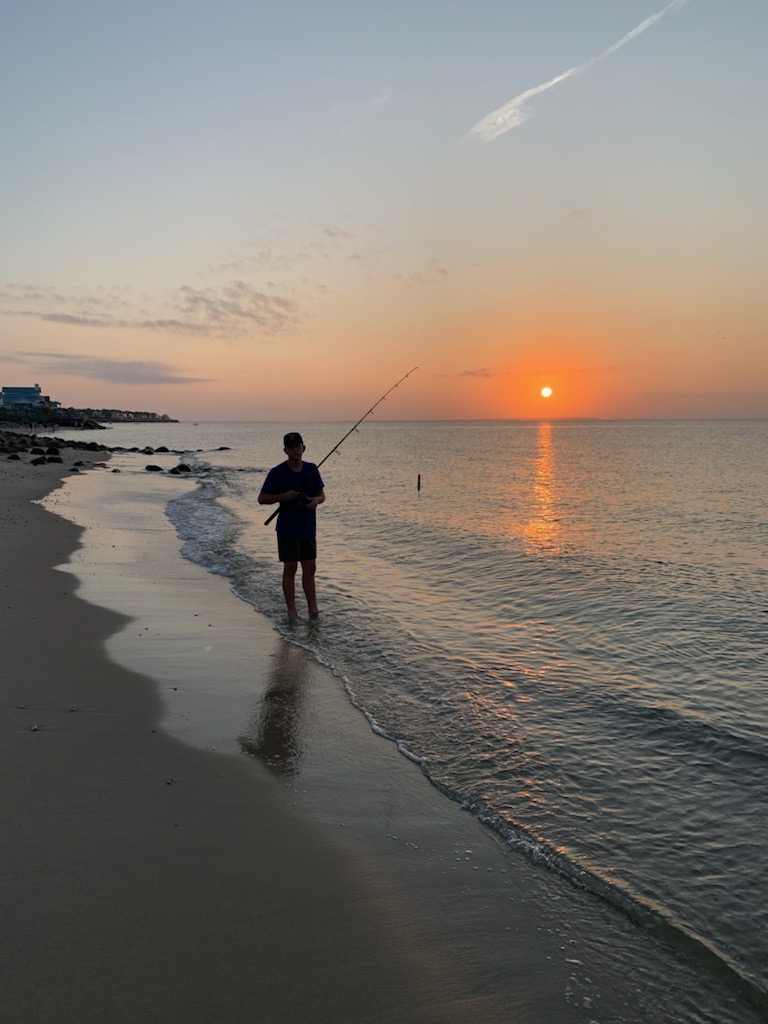
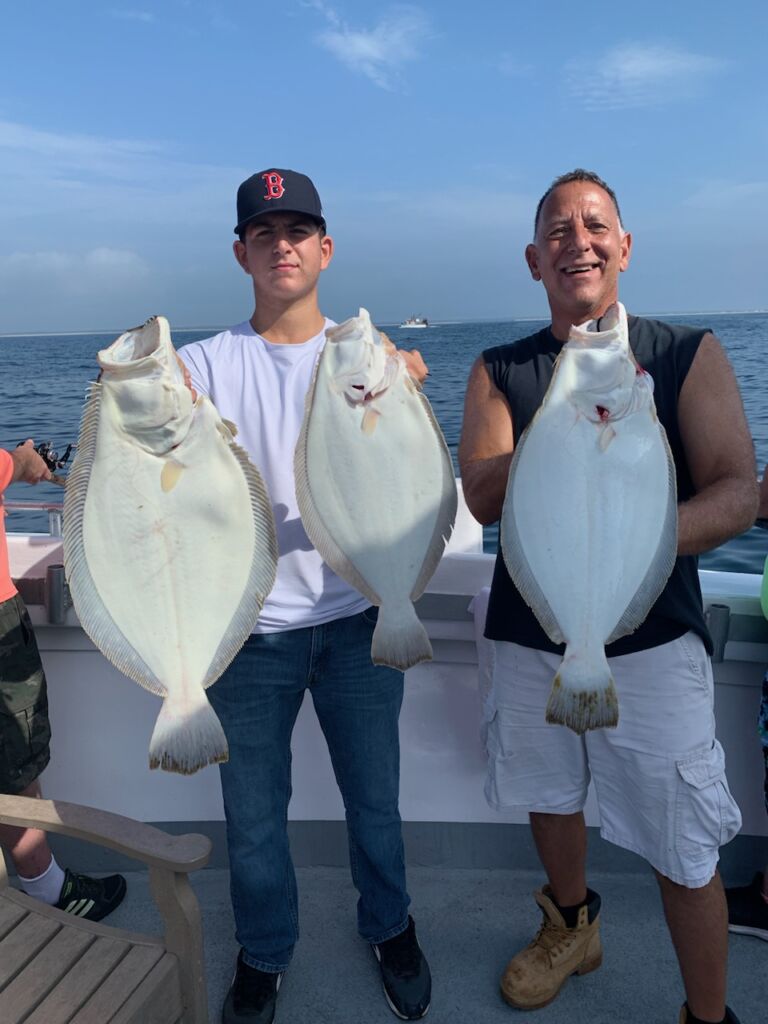
Photo provided by Gary D’Amico.
Chesapeake Bay
The largest estuary in North America encompasses 4,480 square miles and falls into three states: Maryland, Virginia and Delaware. It’s long known as a haven for blue claw crabs, oysters and striped bass (known as “rockfish” locally). Rockfish are so popular in the area that 70-90 percent of the world’s supply comes from the Chesapeake, but a staggering 348 other species of fish are available inshore, offshore and nearshore.
Fall is one of the most popular times of the year to fish the Chesapeake, especially for rockfish. Rockfish head into the waters of Chesapeake each year to feed and spawn, providing anglers a good chance of hooking up.
The Bay is separated into three areas, running north to south: Upper Bay (Baltimore area), Middle Bay (Annapolis, Md. area), and Lower Bay (Virginia Beach, Va. area)
The most well-known destination in Chesapeake is Virginia Beach, VA. It’s a popular tourism destination for families (with more than 13 million visitors annually), but it also offers tremendous saltwater fishing opportunities.
Most offshore expeditions out in the Atlantic Ocean head for Norfolk Canyon, which is 35 miles long and 6,000 feet deep at its deepest point, for billfish and tuna. The canyon, which was once home to the largest marlin ever caught in Virginia Beach (almost 1,100 pounds), is also home to mammoth grouper and tilefish year-round.
Local experts looking to hook into these behemoths typically opt to fish in the late summer/fall with such rugged gear as 6-foot heavy-duty rods, 20-30 pound class reels, 50-pound braided line, 100-200 pound monofilament leaders and 8/0 to 12/0 hooks.
In the Middle Bay area, Annapolis, Md. Is not only the state’s capital, but one of the top spots for fishing on the East Coast. With plenty of opportunities throughout the year to fish in the Bay in the flats and near the shore. While tarpon is typically available in the flats, most visitors go for rockfish, croaker, redfish, and Spanish mackerel near Chesapeake Bay Bridge or the Bill Burton Fishing Pier.
The Upper Bay centers around Baltimore, where seaside parks, harbor piers, and offshore charters provide anglers with some of the best East Coast fishing for rockfish, perch, sea trout (weak fish), and blue catfish. Two shallow-water locales worth exploring are Tea Kettle Shoals and Susquehanna Shoals.
Martha’s Vineyard, Mass.
An island just off the coast from Cape Cod, reachable only by ferry, Martha’s Vineyard offers a mix of quaint, New England charm and world-class offshore and inshore fishing.
The emphasis on the island is on striped bass and bluefish. While some of the best fishing locations on the East Coast are slowing down in the fall, Martha’s Vineyard keeps the action coming with a five-week tournament starting in mid-September called the Martha’s Vineyard Striped Bass and Bluefish Derby. The five-week contest started in 1946 and attracts more than 3,000 registrants annually.
Throughout the year, anglers can catch black seabass and flounder inshore, while full-day trips out into the Atlantic Ocean often yield tuna, sharks, bonito, and False Albacore. If you’re considering booking a charter, do so far in advance; there isn’t an overabundance of fishing charters on the island, and most of the top captains are in high demand.
For beach fishing, locals and fly-fishers migrate to Wasque Point or Lobsterville Beach in hopes of catching a bluefish when the schools come closer to shore, along with porgies (known locally as “scup”). The Oak Bluff Fishing Pier is another option; it’s the longest pier on the island and often rewards anglers with bluefish and striped bass.
Despite its northern locale, fishing is available all year. Even in the harshest months—when it’s too cold to go to the supermarket to buy fish—hardy anglers hook into cod, pollack, and tautog with surprising regularity.
Hilton Head, S.C.
One of the premier resort, beach, and golfing destinations on the East Coast, Hilton Head also offers some exceptional opportunities for fishing. While visitation swells in the summer, there are opportunities for anglers year-round due to the area’s temperate climate and diverse terrain.
Most of the inshore and offshore charters leave Harbor Town Marina and target such fish as tarpon, wahoo, cobia, redfish, and red snapper. Hilton Head is also one of the top destinations on the East Coast for shark fishing. Everything from smaller blacktips and Bonnetheads to offshore monsters such as Hammerheads, Tigers and Makos all hunt offshore.
Onshore, locals often fish inlets (or “follies”) or the various creeks and parks around the area, including the docks around Skull Creek for Largemouth Bass, Red Drum, and even an occasional blacktip shark.
Jarvis Creek Park is often considered the top spot for bass fishing in Hilton Head. The lake here is stocked with Largemouth Bass and bluegill, and fishing is available from the pond’s banks or a small fishing pier.
With so many beaches, surf fishing is also a popular option. Redfish and bluefish are typically the main targets, while trout, flounder, and sheepshead are available in select spots.
What’s the secret location for fishing in Hilton Head? Golf course ponds. Many are stocked with Largemouth Bass, Blue catfish, and porgies. The rule of thumb is to simply check with the golf course manager before starting to fish. Chances are, if you stop fishing before 8 a.m. or start after 6 p.m., there should be no issues.
Speaking of golf courses, Palmetto Dunes and The Sea Pines Resort both have lagoons incorporated into their courses that are worth exploring.
Florida Keys
According to 2023 Fishbox research on the best states to fish in 2023, Florida was tied with Michigan for the top spot.
While the state has 1,350 miles of shoreline (including the Atlantic Ocean and Gulf of Mexico coasts), the focus for those seeking the best fishing on the East Coast should center on the Florida Keys. A 125-mile-long string of islands located just south of Miami, the Keys are blessed with a great climate, lots of access, and supreme facilities for inshore, deep sea fishing, and easy fishing from beaches, bridges, and even kayaks.
Key Largo is the northernmost spot on the Keys—and the largest—for outstanding fishing. It’s a solid choice for those looking to take a day trip from Miami for flats fishing in the Florida Bay or a charter venture into the Atlantic. While dozens of varieties of fish are available near Key Largo, most anglers set their sights—and hopefully their hooks—on mahi mahi, tarpon, speckled sea trout, and snook.
Snook is often targeted by inshore anglers visiting the area for the vigorous fight it provides; it’s one of those fish that seemingly refuses to be caught. Most use live shrimp or bait fish, but a well-placed lure often works as well. Tarpons, conversely, are large, voracious fish that hit on just about any live or cut bait or lure, but when in doubt, use mullet, their preferred natural prey.
Just south of Key Largo in the middle of the Keys is Islamorada, which offers fishing in the flats, off reefs and shipwrecks, and deep offshore canyons. Some say this is where the Keys actually start; Islamorada has a Jimmy Buffet-esque tropical vibe and has been welcoming anglers for decades.
While offshore excursions can yield sailfish, tuna, and mahi mahi, many anglers prefer to stay closer to shore in Islamorada and target numerous species of snappers, including Yellowtail, Mutton (which locals claim is the best tasting), Mangrove, and Cubela.
Get your personalized fishing map
Answer a quick quiz and get your own personalized fishing map
For those looking to avoid the crowds sometimes associated with fishing in the Keys and exploring a remote area, Dry Tortugas National Park beckons. Located 70 miles offshore from Key West, Dry Tortugas—which has the largest concentration of shipwrecks in North America — offers an unparalleled East Coast fishing experience . The uninhabited national park can be reached via ferry and seaplane but charters out of Key West are preferred.
Fishing off various reefs and wrecks, as well as the acclaimed Marathon Humps, typically yield a wide variety of fish, ranging from blue marlin and sailfish to Great Barracuda, Red/Black Grouper sn, appears, and mahi mahi.
This is a year-round fishing destination, and combined with the annual celebrations in Key West, it is a unique and desirable destination for anglers.
Perhaps the entire East Coast fits into this description for fishing as well. With so many varied choices—from the rich, historical lure of the Northeast and Mid-Atlantic regions to the plush resort settings in the Carolinas and the Caribbean-inspired vibes of the Keys—the best East Coast fishing is easily accessible to most of the U.S. population.
You really can’t go wrong in selecting one of our top five areas of the East Coast for fishing. Perhaps the most difficult choice, however, is selecting which one to try first.
That’s known as a high-class problem… and one we readily embrace.
An additional fishing spot: State College, Pa.
While not as glamorous as Montauk or Martha’s Vineyard and its celebrity residents—and certainly not a coastal destination—State College, PA, in central Pennsylvania, offers some of the best East Coast fly fishing in its blue-ribbon creeks and lakes, with 216 miles of trout fishing waters.
It’s entirely plausible for hardcore anglers looking for the best fishing on the East Coast to spend a couple of days saltwater fishing on the coast before heading inland to try their luck fly fishing on central Pennsylvania’s acclaimed trout streams. After all, State College is just a four-hour drive from New York City and three hours from Philadelphia.
Here, brown and rainbow trout weighing over 7 pounds are not uncommon, as the State College area – home to Penn State University—offers anglers the opportunity to fish for wild trout most of the year.
Fun fact: Penn State was the first university in the country to offer a fly-fishing class for credit in the U.S.
Given the popularity of trout fishing in the area, some of the creeks around State College are catch-and-release only. Additionally, some stretches in area creeks don’t permit fishing from the shoreline (only waders are allowed in the water itself). Please check on local regulations.
Most excursions usually start at Penns Creek, which has 35 miles of fishable water and is the largest limestone trout stream in the state. Most hardcore trout anglers concentrate on the 11-mile stretch from Coburn to Cherry Run, which is rated Class A wild trout water.
Read also: Best Bait for Trout: A Complete Guide
But there are also plenty of fish—along with spectacular scenery and wildlife—on the lower 3.9 miles. Depending on the season, several anglers recently reported consistently good action with #22 CDC midges, #16 Tan Gaddis, and #10 Golden Stones.
Another smart choice in the area is Spring Creek, a legendary hotspot for wild brown trout. Here, the limestone creek is fed by a deep spring, which keeps the water temperature stable and enables fishing for most of the year. Locals swear by #20-24 Tricos for most of the year, but of course, fly selection is based on what’s working on a particular day or week.
Nearby, Poe Lake in Poe Valley State Park offers wonderful opportunities for fishing in the winter for catfish, pickerel, and pike.
In short, it may not be a coastal destination and have the glitz associated with some East Coast destinations, but State College is worth a visit. Just make sure to bring your fly-fishing rod and reel, along with an abundance of flies.
